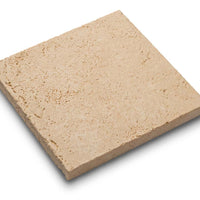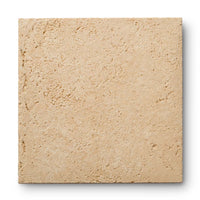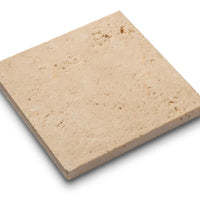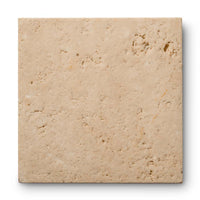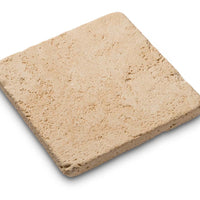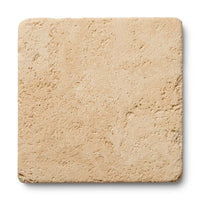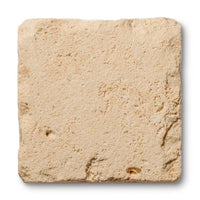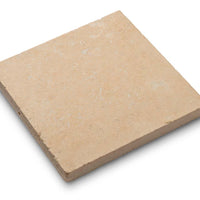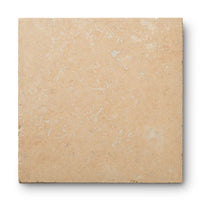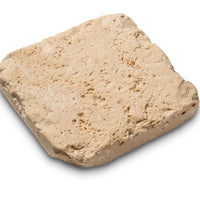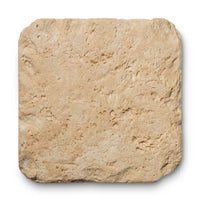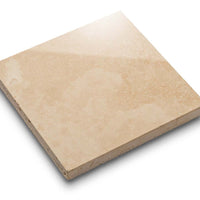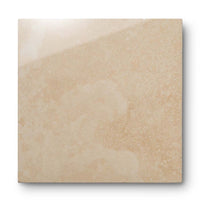Fireplace Materials: Best Stone For Fireplace
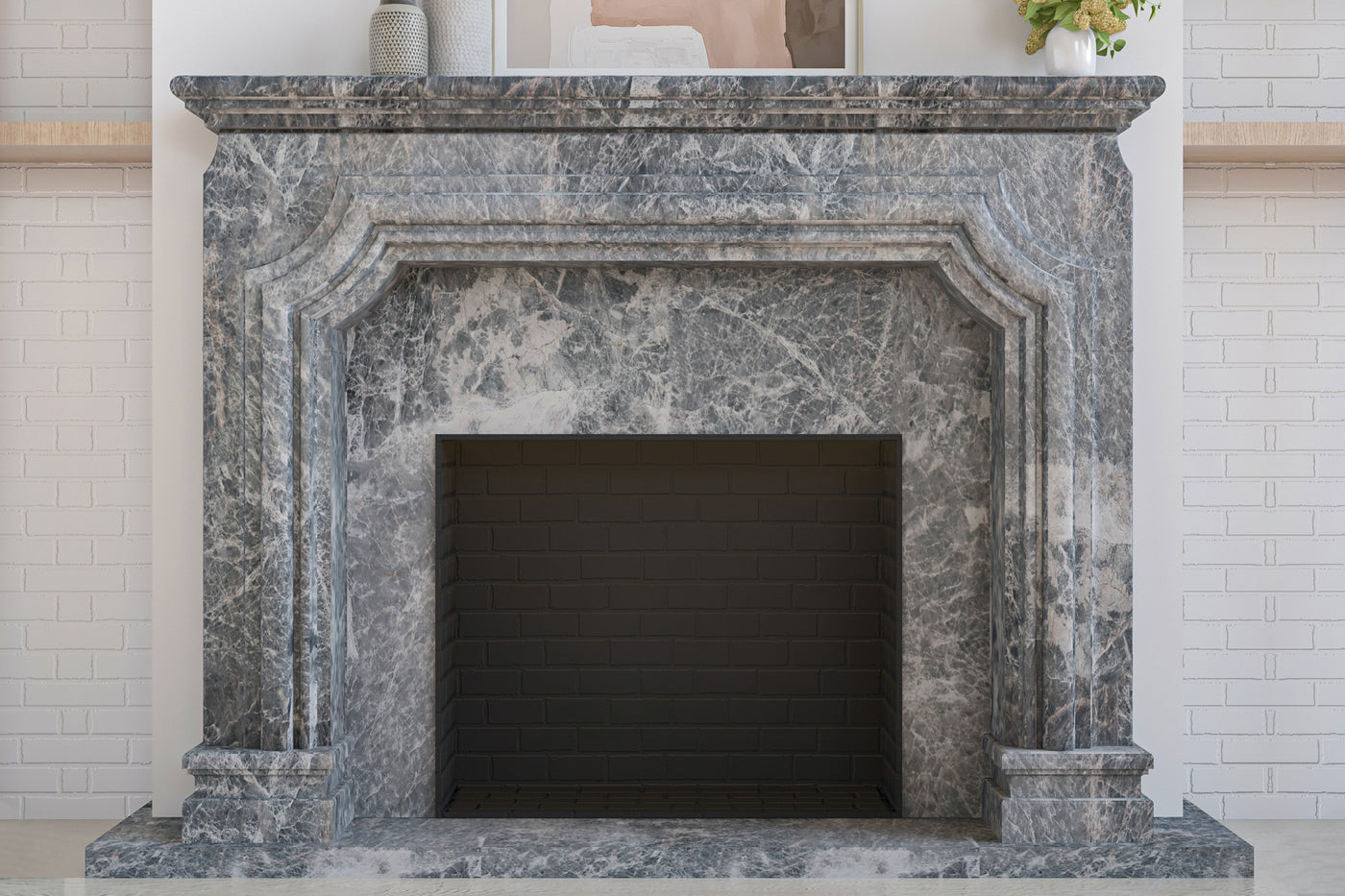
As fall begins and winter shimmers in the horizon, the image of flickering firelight and the sound of crackling flames may be dancing in your head. The days are growing shorter and the temperature is dropping. Before you know it, you’re wrapping yourself in your thickest sweater and turning to the source of heat that generations have depended on—the fireplace.
A beautifully designed fireplace not only offers utility, but it also creates a cozy ambiance perfect for any home, any time of the year. And in a contest of the best design materials to create that luxurious atmosphere, we’d pick natural stone for its timeless look, strength, and durability.
There are gorgeous varieties of natural stones to fit every style. In this guide, we’ll describe our favorites and give you tips for designing the custom fireplace of your dreams.
Of all the fireplace material options available, natural stone is the proven winner. The many benefits of using a natural stone product to construct your fireplace include:1
High heat tolerance
Durability
Ease of maintenance
Sustainability
Timeless beauty
Each variety of natural stone has unique features that make it ideal for specific design choices and applications. Here, we’ll discuss the most commonly used types of natural stone and how these stone options differ.
Adoquin is a type of quartz stone found in Mexico. It’s made from compressed volcanic ash and comes in many colors.2 The base color is lighter with dark speckles sprinkled throughout the stone for an earthy, natural look. Because it’s both lightweight and durable, adoquin is ideal for many projects, including fireplaces.
The popularity of granite is due to both its durability and the wide range of colors it comes in. It can be either polished for a smooth look or left in its natural, porous state for a rougher finish.
Limestone is best used for gas or electric fireplaces because it’s less heat resistant.3 Wood fires burn hotter and limestone will crack in very high temperatures. However, if you’re seeking a light-colored stone for your gas or electric fireplace, limestone is a solid choice. It’s also typically less costly than other natural stones.
Nothing beats marble for class and elegance. It’s known for the contrast of light and dark with eye-catching veins running through the surface. If you’re looking for a dramatic stunner of a stone, then you should consider marble. It’s highly heat resistant and can have a smooth or rough finish to fit whichever style you’re looking for.
Similar to limestone, slate should only be used for gas or electric fireplaces due to its tendency to crack under extreme heat. It’s available in many colors and is typically given a smooth finish which is ideal for modern design styles.
The cross-cutting technique used for travertine makes it one of the most unique-looking stones to use for a fireplace. No two are the same. Travertine is available in a variety of natural tones and can be polished or unpolished. This versatility makes it possible to use these stones in a classic or contemporary fireplace design.
The anatomy of your fireplace includes four elements: the hearth, mantel, firebox, and surround.4 Each of these components should coordinate with the other three for a cohesive and classy look.
Hearth – The hearth is the floor of the fireplace. It also includes the stones that stick out into the room and protect your floor from sparks, heat, and flames.2 It’s essential that the hearth is large enough to mitigate the risk of fire in your home, so most building codes require it to extend at least 20 inches from the firebox.
Mantel – The mantel rests over the firebox. The original purpose of the mantel was to keep smoke from coming into the room by pushing it back toward the chimney. Now, mantels are typically ornamental rather than functional. They can be made of wood, stone, or other materials.
Firebox – The place where the fire burns in your fireplace is called the firebox. The firebox might be installed flush with the floor or it can be elevated.
Surround – The surround is the part of the fireplace that goes around the firebox. It can extend as far up as the ceiling or end at the base of the mantel.
Now that you’re familiar with the types of stone and the parts of a fireplace, let’s analyze a few other elements you’ll need to consider to ensure your stone fireplace design is the right fit for your home.
The location of your firebox will impact the design of your fireplace. For example, if the firebox is flush with the floor, the hearth will also lie flat. If the firebox is elevated, you’ll want to have a raised hearth. As an added bonus, a raised hearth can provide a warm spot to sit and relax by the fire.
Fireplaces can be constructed by using stones that fit together in several different ways, including:
Stacked – Think of a stone wall where each stone rests on top of the one below. The edges are jagged and aren’t perfectly fit together for a rugged, natural appearance. This is the look that a fireplace built with a stacked style of stone will bring to your home.
Uniform – When all of the stones have smooth edges and fit tightly together like puzzle pieces, you’ll achieve a uniform look. Often slate and marble are cut in perfect squares that lie flat next to each other like tile for a more modern look.
Cobblestone – Irregularly cut stones pieced together like a cobblestone street will make your home feel like a cozy cabin in the woods. The variety of shapes and sizes cobbled together to form interesting shapes and patterns that draw the eye directly to your fireplace.
The size of the room dictates the correct size for your fireplace. You want the proportions to be right so that you don’t throw off the balance of the room. For example, smaller rooms require shallower fireplaces while larger rooms can accommodate bulkier stone without being overwhelmed.
Ceiling height is also important to your fireplace design. We recommend that rooms with ceilings less than 12’ have a fireplace that covers less than 2/3 of the vertical wall space, otherwise it’ll make the room feel cramped. In contrast, soaring ceilings can handle taller fireplaces with ease.
When all the elements work together and complement the rest of your home, you’re left with a refined, winning look that’s sure to impress everyone who visits.
A well-built fireplace will complement the rest of your home, add a touch of elegance, and provide warmth and comfort for your family. It’s also one of the first things guests notice when they walk in. If you want assistance designing an exquisite fireplace for your home, MATERIAL is here for you.
We have 11 showrooms across the U.S. and design professionals who will help make your natural stone fireplace dreams a reality. Interested in an arts and crafts fireplace design or perhaps CNC stone cutting for your home project? We’ve got you covered. Contact us today to get started before the winter chill arrives.
Sources:
Natural Stone Institute. R-Value for Natural Stone. https://www.naturalstoneinstitute.org/stoneprofessionals/technical-bulletins/rvalue/
Natural Stone Institute. Glossary of Stone Industry Terms. https://www.naturalstoneinstitute.org/default/assets/File/consumers/glossary.pdf
S.F. Gate. What Type of Stone is Used for a Hearth? https://homeguides.sfgate.com/type-stone-used-hearth-92034.html
A Little Design Help. Light a Fire: The Parts of a Fireplace. https://alittledesignhelp.com/light-a-fire-the-parts-of-a-fireplace/
Please note: comments must be approved before they are published.
* indicates a required field
Our finishes are applied by hand, ensuring that each element of your order matches and blends together well. In some instances, you may notice a natural variation in the application of the finish. This is normal and should be expected with a handmade item.
